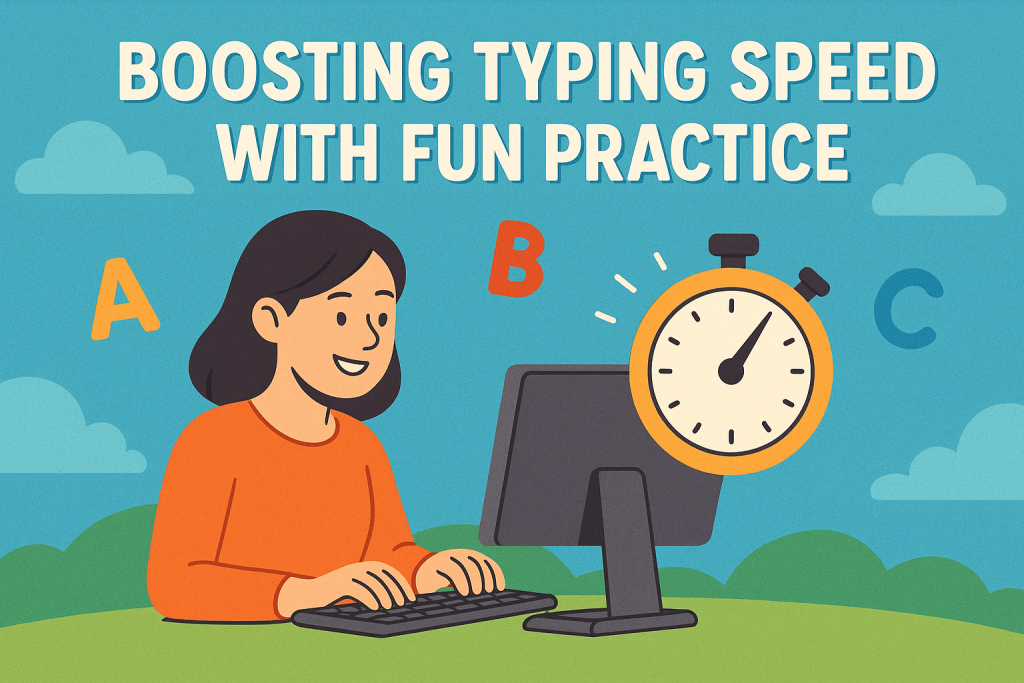Typing faster makes work, school, and chats feel smoother. With a few steady habits, awkward pecking turns into a calm, confident flow. The best progress starts simple: short sessions, relaxed shoulders, and clear goals like adding five words per minute this month. Warm up with a line or two, keep your hands light on the keys, and stop while practice still feels easy. Over time, small wins stack into real speed.
A tiny push can make practice stick. As a friendly prompt, click here to point to quick drills and upbeat tests that lift motivation. After that spark, go back to basics: rest on the home row, look at the screen instead of the keyboard, and type clean lines before chasing pace. Set a one-minute timer, take a short break, then repeat. Accuracy lands first; speed follows. Keep sessions daily and light, and progress arrives without stress.

We begin with a Quick Warm-Up
Finger-loosening warm-up. Writing five minutes on a typewriter or other free-writing machinery, words are a workout that unlocks fingers. As an example, to form muscle memory, a fun phrase can be repeated. A good practice is to warm up before a typing session, as would be done before a large project.
Warm-up is easier to stick to once you do it daily and try it once a week. The routine is enjoyable as it remains short and playful, such as typing a favorite quote.
Free Typing Games
Practice can be a ball in the online typing games. Such sites as Typing.com or Keybr provide entertaining games, such as a race to type words before they disappear. As an example, one game that you zap falling letters gives you the feeling of playing a video game, yet gaining momentum. The instruments combine entertainment and education.
Just a few sessions of testing one game identify a favorite. By remaining in short bursts, such as 10 minutes, it will stay light and is unlikely to burn down.
Some typing game ideas include:
- Try a racing game to type faster.
- Play a word-zapping challenge.
- Practice for 10 minutes daily.
- Pick one site for focused fun.
Place Your Finger on Placement
Having good finger placement makes typing easier. LiSE starts on a solid base using home row, where fingers rest on A-S-D-F and J-K-L. As an example, one can type without glancing at the keyboard, e.g., hello. This improves confidence. Having fingers on the right buttons is saving time and effort.
Getting it right by training with the help of a finger placement chart, which is available online. When the sessions are intermitted (short), checking the position of hands provides consistent progress.
Real Tasks Practice
It is more practical skills, like typing in the real stuff, such as emails or notes. As an example, one could practice writing a short message to a friend. It becomes less of a chore to do things that one enjoys, such as writing a grocery list when using a keyboard.
Making it achievable, such as typing one short note every day, makes it maintainable. There is a bit of fun when a session is timed to come in faster than the previous day.
Some real-task practice tips include:
- Type a daily note or message.
- Time a short email for speed.
- Use real tasks like lists or chats.
- Aim for one practice task daily.
Monitoring of the Progression
Monitoring performance is a driver. A free typing test (on 10FastFingers) displays a weekly increase in typing. As an example, it is a great feeling when the points on impact increase by 30 to 40 words per minute. Observing marks using a phone app follows development.
Monitoring of speed only once a week prevents obsessiveness. Positive vibes are maintained by celebrating small wins, such as writing a sentence faster.
Dealing with Typing Frustrations
The initial keyboard interface is sluggish or awkward. Beginning modestly, with five-minute sessions, eliminates frustration. Fumbling with fingers. In this case, slowing down to concentrate on accuracy, such as typing in a sentence, helps. Repetition of a difficult word, such as rhythm, helps to develop confidence.
It is typical to worry about speed. Developing an individual skill, such as accuracy, can be beneficial. Time stops being the bottleneck, therefore speed comes naturally and without strain.
Typing Assured
An increment of speed in typing is a diverse method of simplifying and enjoying daily activities. Most people can improve their typing speed with a warm-up, typing games, and real-life practice. Practicing about where to put the fingers and reviewing the progress makes it interesting. Typing can be a graceful, assured skill after some repetition and practice, and helps to save time and give liveliness to work, school, or conversation alike.